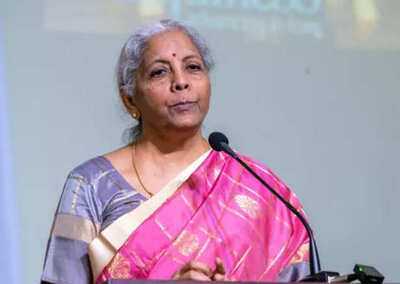
India is being hailed as the fastest-growing major economy, clocking 8.2% GDP growth in FY2023-24. Its manufacturing sector is expanding, its digital economy is among the largest in the world, and its services sector continues to power global outsourcing.
But while the country celebrates growth, its wealth creators are quietly leaving. According to a Kotak Private Banking–EY survey, more than 20% of ultra-high-net-worth individuals (UHNWIs) — Indians with assets above ₹25 crore ($30 million) - are either migrating or planning to migrate abroad.
Why would the richest contributors to India’s economy choose the exit door at a time of record growth? The answers reveal a deeper paradox in India’s development story.
1. Capital Flight: Billions Flowing Out of India

Ahmedabad, June 04 (ANI): Royal Challengers Bengaluru's Virat Kohli celebrate with his wife Anushka Sharma after winning the Indian Premier League 2025 final match against Punjab Kings, at Narendra Modi Stadium in Ahmedabad on Tuesday. (ANI Photo)
India’s outward remittances under the Liberalised Remittance Scheme (LRS) stood at $27.14 billion in FY2022-23, up from $19.61 billion the year before - a jump of nearly 40%.Much of this wealth is being channelled into:
- Overseas real estate in Dubai, London, and Lisbon
- Residency-by-investment visas (golden visas) in Europe, the Middle East, and North America
- Foreign universities and education for children
2. India’s Tax Burden: Among the World’s Heaviest for Individuals

New Delhi, July 13 (IANS) The average number of days it takes for taxpayers to get refunds from the Income Tax Department in India has come down drastically from 93 days in 2013 to a mere 17 days in 2024, reflecting the increased efficiency in the system on the back of rising digital infrastructure that enables faceless online disbursals.
India’s corporate tax is competitive at 22%. But for individuals, the story is harsher:- Effective tax rate for incomes above ₹5 crore: 42.74% (including surcharge and cess).
- Compare this with Singapore (22%), Hong Kong (15%), and Dubai (0%).
- Complexity (multiple exemptions, surcharges)
- Frequent changes in rules
- Opaque enforcement leading to unpredictability
3. Inequality: An Economy Rising Unequally

FILE - Pedestrians walk on the Zocalo in the Historic Center of Mexico City, Aug. 19, 2023. (AP Photo/Arnulfo Franco, File)
The World Inequality Report 2022 highlights stark gaps:- The top 1% of Indians control 22% of national income.
- The bottom 50% share just 13%.
- The average wealth of the top 10% is ₹63 lakh, while the bottom half holds just ₹66,000.
4. Millionaire Exodus: India Loses Its Wealth Creators

Dhaka, July 31 (IANS) With almost three out of 10 children (28.9 per cent) living in multidimensional poverty, significantly higher than the rate for adults (21.44 per cent), children are disproportionately impacted by deep-rooted challenges of poverty in Bangladesh.
India is now the second-highest source of millionaire outflows globally.- 6,500 millionaires left India in 2023, according to Henley & Partners, second only to China.
- By 2025, the annual outflow is projected to reach 8,000 millionaires.
5. Healthcare, Education, and Liveability Gaps

New Delhi, Sep 1 (IANS) As thousands of health policyholders in India are suffering due to loss of access to cashless hospitalisation, the Association of Healthcare Providers - India (AHPI) on Monday asked health insurance firms to revoke suspension and create an affordable as well as sustainable model.
India’s ultra-rich cite basic service gaps as a primary driver of migration:- Air quality: 39 of the world’s 50 most polluted cities are in India (World Air Quality Report 2023).
- Healthcare: India spends 2.1% of GDP on healthcare, compared to 5% in China and 9% in OECD nations (World Bank, WHO).
- Education: Public spending is 2.9% of GDP, far below UNESCO’s recommended 6%.
- Infrastructure: According to Mercer’s 2023 Quality of Living Index, Indian cities rank far below global hubs like Singapore, Dubai, and Zurich.
6. Judicial Delays and Institutional Inefficiency

Bihar SIR: Supreme Court to hear plea for extension on September 1 deadline for claims, objections
India’s legal system is among the slowest in the world:- 52 million cases pending in courts (National Judicial Data Grid, 2023).
- Civil disputes can drag on for 10–15 years.
7. The Trust Deficit: Corruption and Red Tape India ranked 96th of 180 nations in the Transparency International Corruption Perceptions Index 2023.
Combined with:
- Bureaucratic delays
- Unclear regulations in emerging sectors like fintech and digital economy
- Policy flip-flops that make long-term planning difficult
Growth Without Confidence Is Fragile India’s growth numbers are impressive. But if those who benefit most from them are choosing to leave, it signals something deeper.
Wealthy individuals are not just chasing tax havens or foreign passports. They are responding to systemic gaps - air quality, healthcare, education, taxation, and institutional efficiency.
When they leave, they don’t just take money — they take investment, trust, and leadership capital. And that weakens the very foundation of growth.
India’s challenge, then, is not just to grow, but to build confidence, stability, and liveability. GDP can rise, but unless people truly want to live and invest here, growth risks becoming a hollow number.
-
Nutritionist Explains Why Diet And Exercise Must Go Hand In Hand

-
How To Grow Microgreens At Indian Homes In 10 Days?

-
Coconut Water Or Fruit Juice: Which One Helps You Lose Weight?

-
7 mistakes to avoid when starting strength training as a senior

-
Fact Check: Government is distributing free solar flour mill to women, the truth of the claim going viral? , Fact Check Government Distribute Free Solar Flour Mills to Women
